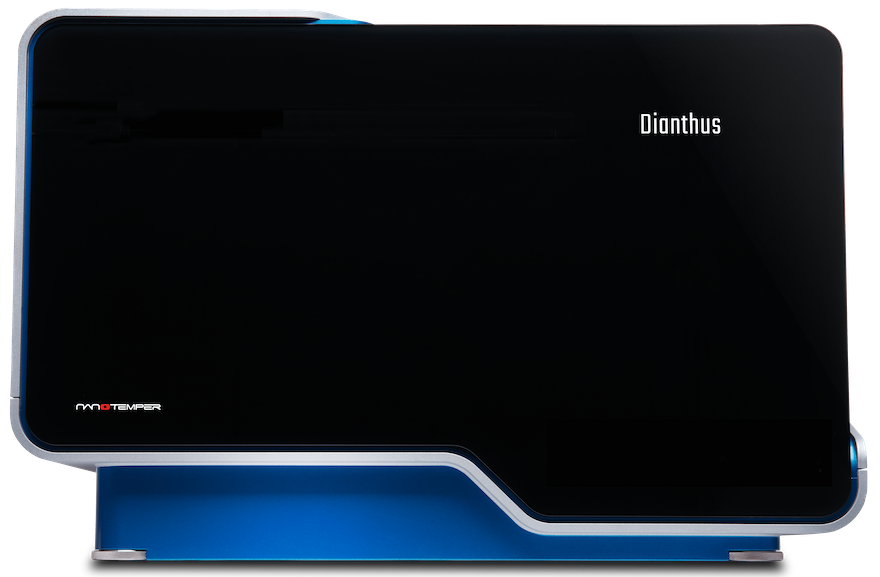



NanoTemper Dianthus System
Tackle your most challenging affinity screenings with Dianthus
No matter what screening campaign you’re tackling, you are bound to encounter common issues that worry most scientists. Relax and focus on your research knowing that with Dianthus, you don’t have to fret about them.
Challenge |
|
Solution |
Because your method requires a significant change in mass to measure interactions, it’s difficult to identify hits from a library of fragments due to their very low molecular weight. |
► |
With Dianthus, you identify hits from fragment libraries with confidence because measurements are mass-independent.And, because Dianthus detects a broad range of affinity strengths, it’s useful for hit identification when fragments bind to proteins with mM affinity and lead optimization when fragments grow to form larger compounds that bind at low nM affinities. |
Challenge |
|
Solution |
Because IDPs don’t fold into a homogeneous 3D structure, you see aggregation triggered by non-native intermolecular interactions. On top of that, you are concerned with aggregation resulting from the high concentrations required by other methods. |
► |
With Dianthus, a high concentration is not required like it is with ITC. And if aggregation happens at low concentration, Dianthus differentiates between binding and aggregation so you get a better understanding of how the molecules behave. |
Challenge |
|
Solution |
Your method requires immobilization which easily disturbs the conformational equilibrium of IDPs. |
► |
Dianthus measures in solution, so the conformational equilibrium is not at risk of being disrupted as it happens with methods that require immobilization like SPR. |


 |
Decide which hits are worth moving forward withGenerating results is great, but getting automated, actionable insights from your results is even better. DI.Screening Analysis software gives you screening summaries as well as easy-to-interpret ranking tables and histograms. And because your Kds are calculated from data with high signal-to-noise ratios, you decide with certainty which candidates are worth moving forward with.
|
 |
Get consistent results with high-quality consumablesGet the high quality and consistency you expect from consumables when finding and validating hits. Dianthus 384-well plates have all the features needed for the best performance and user experience:- They are manufactured with a proprietary coating that prevents protein from sticking to the wells- They go through rigorous QC testing to ensure consistency from well to well- They have a barcode that helps you track your assay and data back to a specific plate.You’ll also want to use a labeling kit to label your proteins or peptides with fluorophores selected for their sensitivity to binding events — so you get the best results with Spectral Shift or TRIC.
|